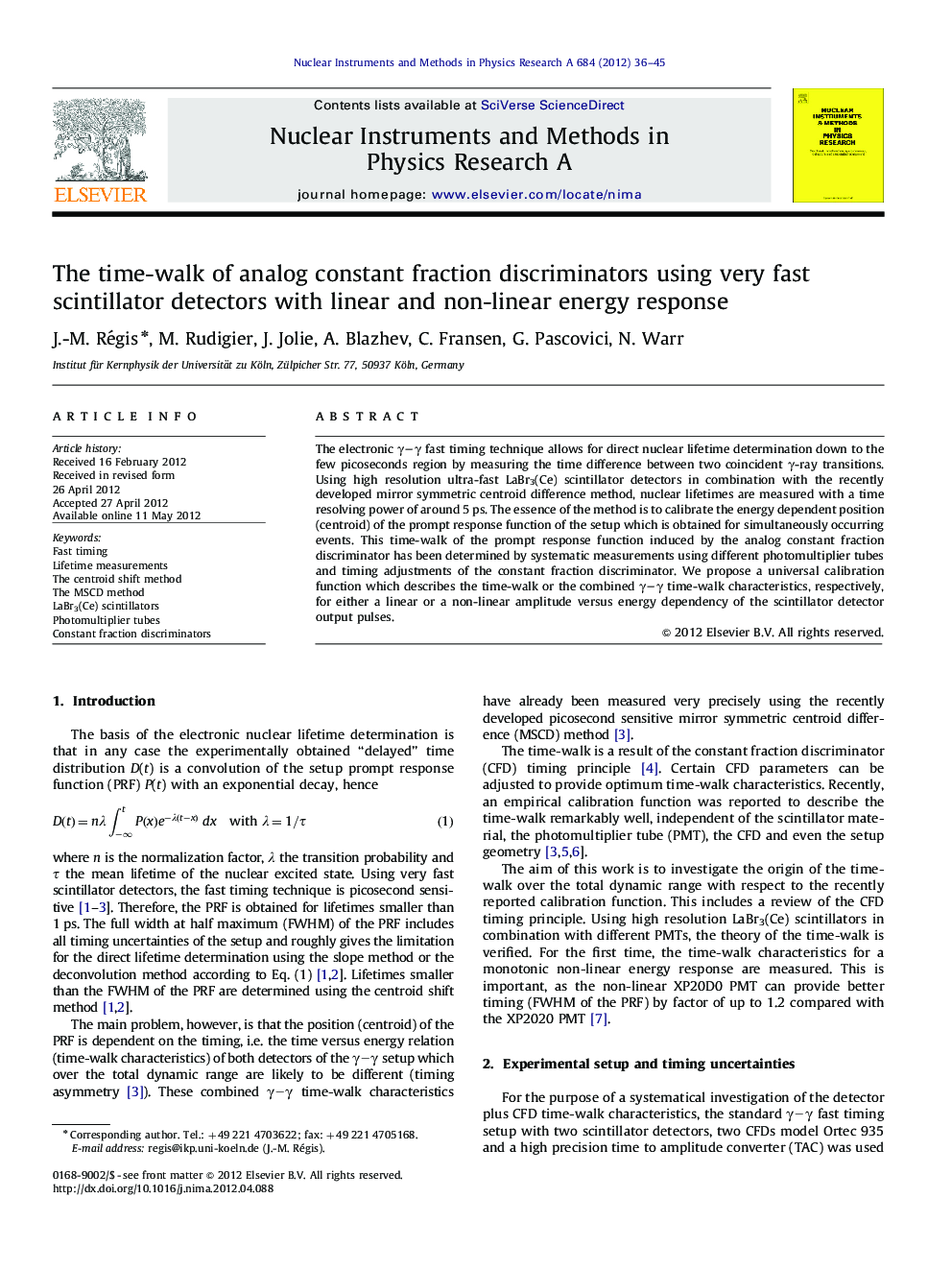| Article ID | Journal | Published Year | Pages | File Type |
|---|---|---|---|---|
| 1823803 | Nuclear Instruments and Methods in Physics Research Section A: Accelerators, Spectrometers, Detectors and Associated Equipment | 2012 | 10 Pages |
The electronic γ–γγ–γ fast timing technique allows for direct nuclear lifetime determination down to the few picoseconds region by measuring the time difference between two coincident γ-rayγ-ray transitions. Using high resolution ultra-fast LaBr3(Ce) scintillator detectors in combination with the recently developed mirror symmetric centroid difference method, nuclear lifetimes are measured with a time resolving power of around 5 ps. The essence of the method is to calibrate the energy dependent position (centroid) of the prompt response function of the setup which is obtained for simultaneously occurring events. This time-walk of the prompt response function induced by the analog constant fraction discriminator has been determined by systematic measurements using different photomultiplier tubes and timing adjustments of the constant fraction discriminator. We propose a universal calibration function which describes the time-walk or the combined γ–γγ–γ time-walk characteristics, respectively, for either a linear or a non-linear amplitude versus energy dependency of the scintillator detector output pulses.
